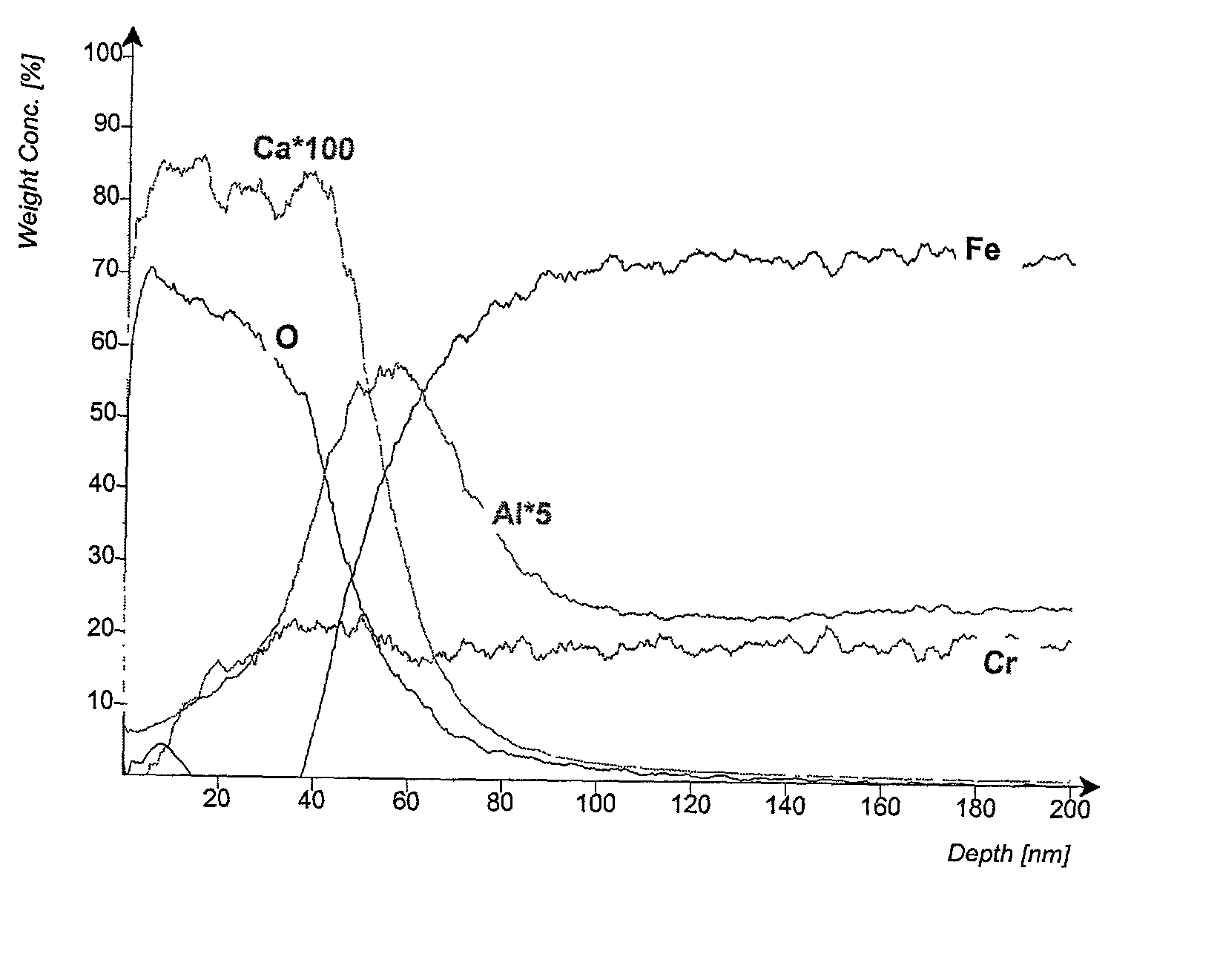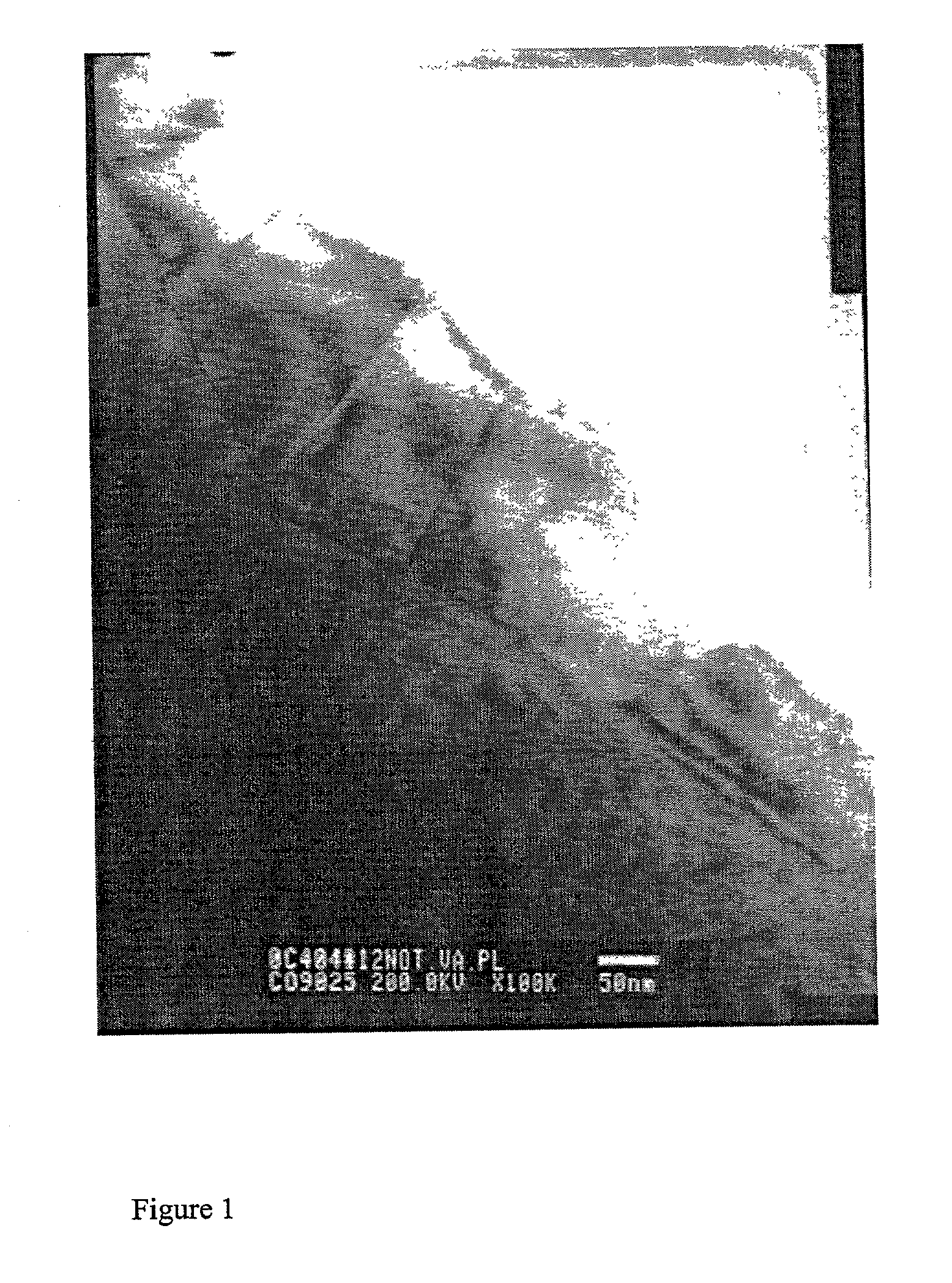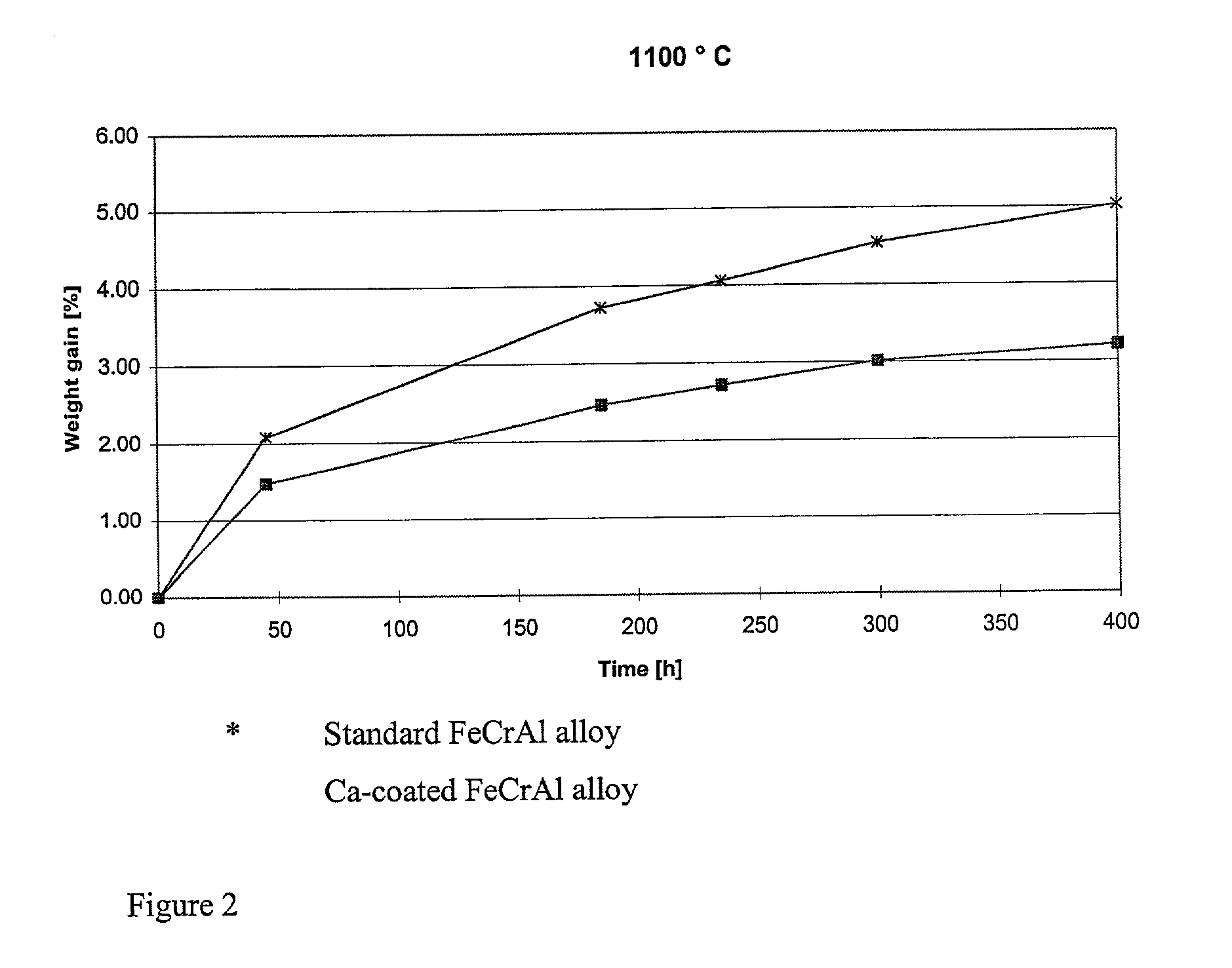Surface modified stainless steel
a technology of stainless steel and modified surface, which is applied in the direction of catalyst carriers, physical/chemical process catalysts, furnaces, etc., can solve the problems of forming aluminum oxide, affecting the production efficiency of stainless steel,
- Summary
- Abstract
- Description
- Claims
- Application Information
AI Technical Summary
Benefits of technology
Problems solved by technology
Method used
Image
Examples
Embodiment Construction
[0007] By applying a continues uniform layer of a Ca-containing compound on the surface of the FeCrAl alloy before annealing, a mixed oxide of Al and Ca is formed during the heat treatment. This treatment gives the advantage of influencing, i e hindering, the aluminum oxide formation and nucleation already during the beginning of exposure to high temperature, which increases the lifetime more effectively than other methods, e g alloying or cladding. The surface has a more compact and homogenous oxide layer with less pores, dislocations and cavities than the hitherto known alumina layers formed on FeCrAl-alloys after heat treatment. The surface layer acts as barrier for aluminum ions and oxygen to diffuse through the alloy / oxide boundary and the oxidation resistance and lifetime of the alloy are therefore significantly improved. It is believed that the Ca-layer on the surface of the alloy tightens the surface in a way that the alumina depletion of the alloy is drastically reduced. Ca...
PUM
| Property | Measurement | Unit |
|---|---|---|
| thick | aaaaa | aaaaa |
| thick | aaaaa | aaaaa |
| thick | aaaaa | aaaaa |
Abstract
Description
Claims
Application Information
 Login to View More
Login to View More - R&D
- Intellectual Property
- Life Sciences
- Materials
- Tech Scout
- Unparalleled Data Quality
- Higher Quality Content
- 60% Fewer Hallucinations
Browse by: Latest US Patents, China's latest patents, Technical Efficacy Thesaurus, Application Domain, Technology Topic, Popular Technical Reports.
© 2025 PatSnap. All rights reserved.Legal|Privacy policy|Modern Slavery Act Transparency Statement|Sitemap|About US| Contact US: help@patsnap.com



